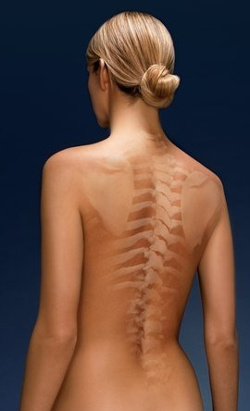Spinal Health, Keeping Your Back Healthy

Spinal Health
“…remaining thin, stretching the hamstrings regularly, and strengthening the abdominal muscles should provide optimum stability and function of the lumbar spine.”
There are several things that can influence the spine throughout our lifetimes and throughout our daily lives. The cumulative effects of small circumstances may not even become a consideration to most of us. However collectively, they may have a great influence over the function of the spine. I will review three mechanical aspects of the body that can have a significant impact upon the stability of the spine.
The hamstring muscles are situated on the posterior thigh. They originate on the ischial tuberosity of the pelvis and insert below the knee. More specifically, these are the biceps femoris, the semimembranosus, and the semitendinosus muscles. Because this group of muscles are attached to the pelvis, they can influence the resting and functional position of the pelvis and the spine. Generally speaking, tight hamstring muscles negatively affect the motion of the pelvis and the lumbar spine by restricting range of motion. Conversely, loose hamstrings allow for greater range of motion of the spine and hips. Greater flexibility can mean less injury and degenerative changes.
I prefer to use the term “regional obesity” to describe excessive weight at the abdomen. A person may be thin over the rest of the body, but sometimes they have a specific collection of weight concentrated over the abdomen; thus the term regional obesity. It may be intuitive to some to realize that this sort of weight distribution imparts a continual mechanical load upon the muscles of the lumbar spine. As the weight increases on the front of the body, the muscles on the other side must remain under a continual state of contraction proportional to the gravitational force of the excessive size of the abdomen. This creates a continual energy drain and ultimately fatigue in addition to a continual strain on the muscles, ligaments, and tendons of the lumbar spine. I have seen hundreds of instances where patients have presented to my office with acute and unexplained low back pain that was surely attributable to this body type. Indeed, this situation can produce sprains and strains of the lumbar spine even without an external load that the patient may carry or lift.
The abdominal muscles originate on the sternum and they find their anchor on the pubic symphysis of the pelvis. Just as the hamstrings can influence the motion of the pelvis from behind, the abdominal muscles can orchestrate the biomechanics of the spine and pelvis from the front. The abdominal muscles influence the spine primarily through stability such that when they have firm resting tone, they provide favorable support to the spine. When they become weak and distended, they create instability and potential for sprains and strains. Regional obesity of the abdomen and weakness of the abdominal muscles often work in concert to create significant instability of the lumbar spine, but the opposite is true if we remain fit and thin across the abdomen.
It should be apparent that if we combine tight hamstrings, obesity at the abdomen, and weak abdominal muscles, we have a recipe for mechanical failure of the low back. It should also make sense that remaining thin, stretching the hamstrings regularly, and strengthening the abdominal muscles should provide optimum stability and function of the lumbar spine.
Terrence Dini, D.C.
Certified Strength and Conditioning Specialist
Guest Writer

